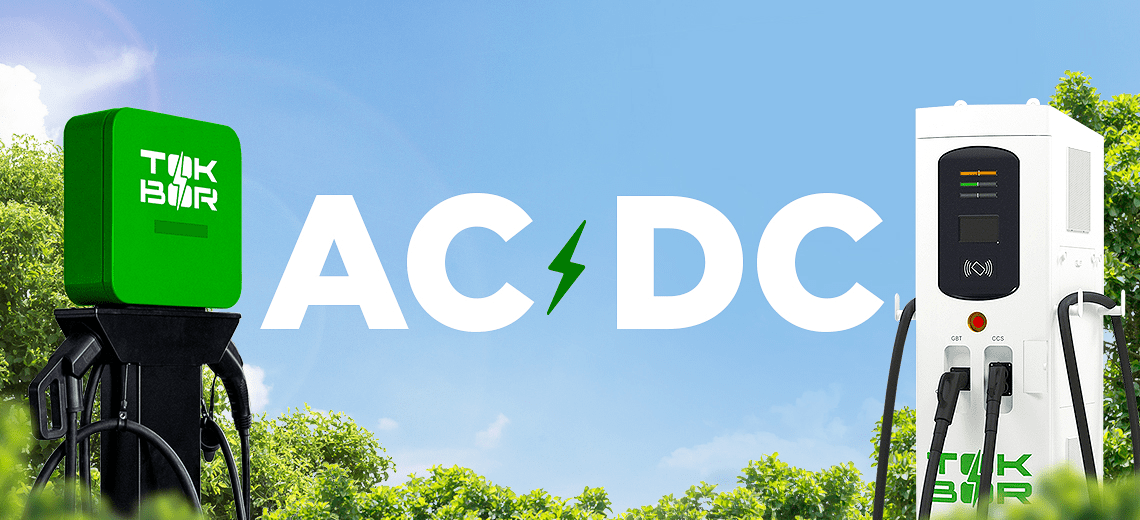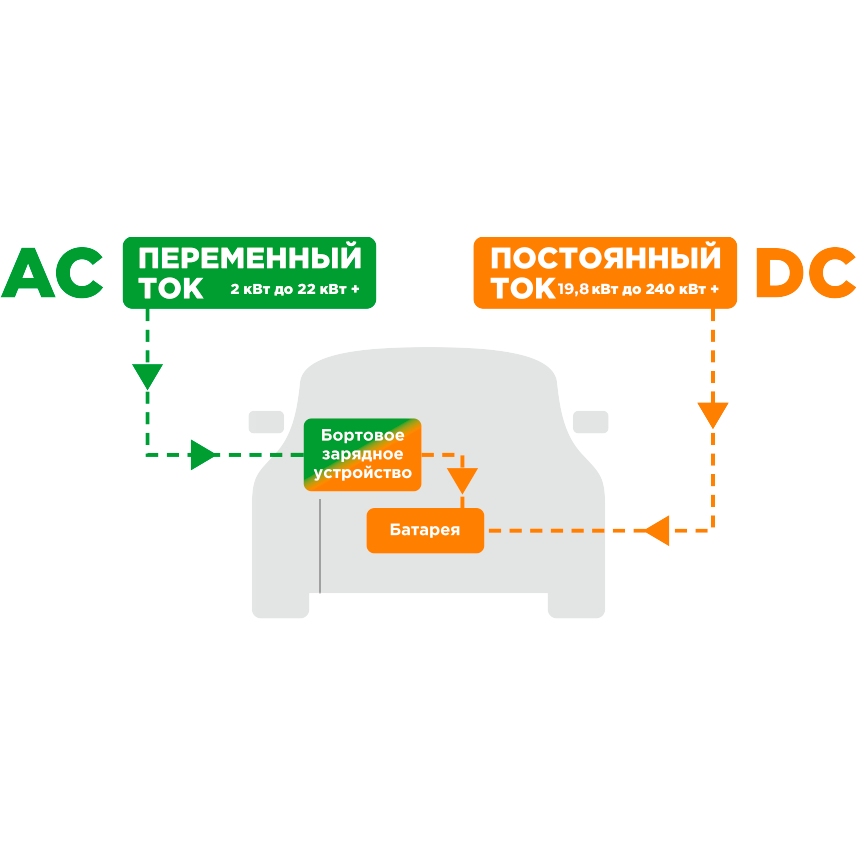
AC/DC (220V - 380V) what's the difference?!
Many electric car owners often ask the question, what power do TOK BOR electric charging stations produce, 220V or 380V? Many people have the wrong idea and it is wrong to divide electric stations according to this criterion.

If we talk about the main types of charging, then these are slow charging and alternating current AC and fast charging direct current - DC. Charging and alternating current can be both single-phase 230V and three-phase 400V, for this reason it is not correct to determine the charging power based on voltage. Charging power is calculated by the current strength in Amperes A, for greater convenience, it is sometimes indicated in kilowatts kW.
Let's understand in more detail.
AC or slow charging stations are just "smart" AC switches that feed the available alternating current (without influencing or converting it in any way) through the cable into the electric car to the on-board charger in the car itself, and the charging and electric car speed depends directly on it power. They control the charging process via special signal wires and implement the following important functions:
Coordination of the charging process with the electric vehicle, only after which the current is turned on, and at the end of charging it is turned off;
Power control - indicates the maximum allowable current to the electric vehicle and controls it so that the electric vehicle does not overload the network and does not "cut down" the machines;
Safety - is responsible for the emergency shutdown of the current, in case of detection of its leaks on the charging cable or station body, as well as in the electric vehicle itself. Monitors the quality and performance of grounding.
Advanced AC charging stations often have additional features: kilowatt counters, delay timers, intelligent load management functions (dynamic balancing), connection to cloud management and monitoring systems, and many others.
Thus, at the same AC station, different electric vehicles can consume different power.
Here is a prime example
At AC stations
on GB/T AC connectors
The Linktour k-one electric car can recieve only 3 kWh, the Baic EU5, and many others already take 7 kWh, but, for example, the Chinese Tesla model 3 already takes all 3 phases and consumes 11 kWh.
– on Type 2 connector
The main volume of electric vehicles, and such as the Mercedes EQC take 11 kWh, the European Tesla model S already takes 22 kW*h, Renault Zoe in general - 43 kWh.
And about the run, at the same station from 3 to 43 kWh.
Unlike an AC station, a battery can be charged directly at a DC station, there is no dependence on the power of the built-in power supply. But there are still limitations depending on the battery, its capacity and many other factors, such as air temperature, however, the charging speed is still 5-10 times higher than on alternating current.
Powerful AC converters (19,8-240+ kW) remain standing on the ground and are connected directly to the battery through special connectors that contain power and signal cables. What is the DC station responsible for?
Coordinates the charging process with the electric car and only after coordination turns on the current, turns it off at the end of the;
Limits and regulates the current on commands from the BMS (Battery Management System - battery management system), in order to carry out the charging process without overloads and overheating;
Monitors the safety of the charging process and turns off the current in the event of current leakage on the charging cable or station body, in the electric vehicle itself, or grounding problems occur;
Monitors the temperature of the connectors to avoid overheating.
For example, a Tesla Model 3, which has liquid cooling and a large battery, can take 250 kWh at the peak, and the outdated Nissan Leaf only 10 kWh, the Volkswagen e-Lavida, which is widespread in Uzbekistan, has a factory limit of 50 kW.
In the TOK BOR mobile application, you can see the types of connectors, their power at the DC station, and at which electric station they are located.
<< Back

